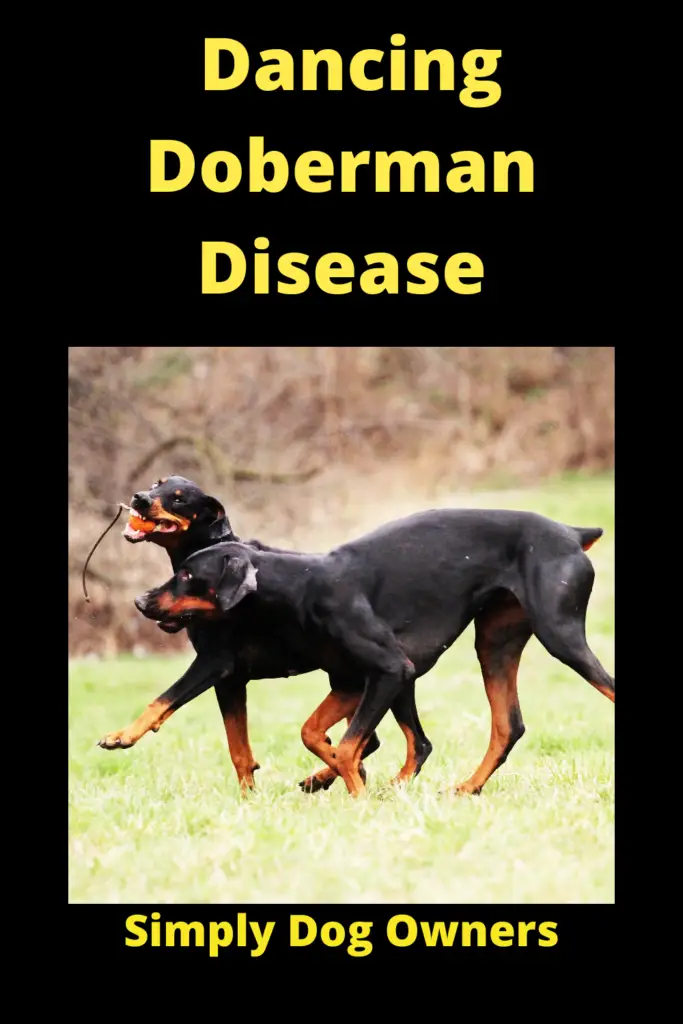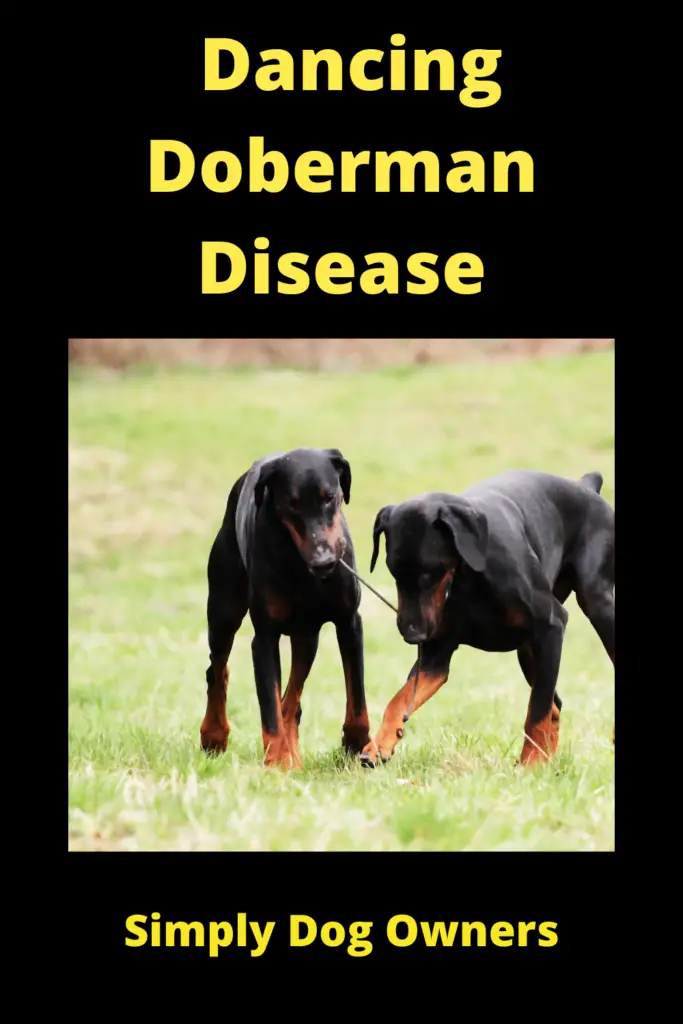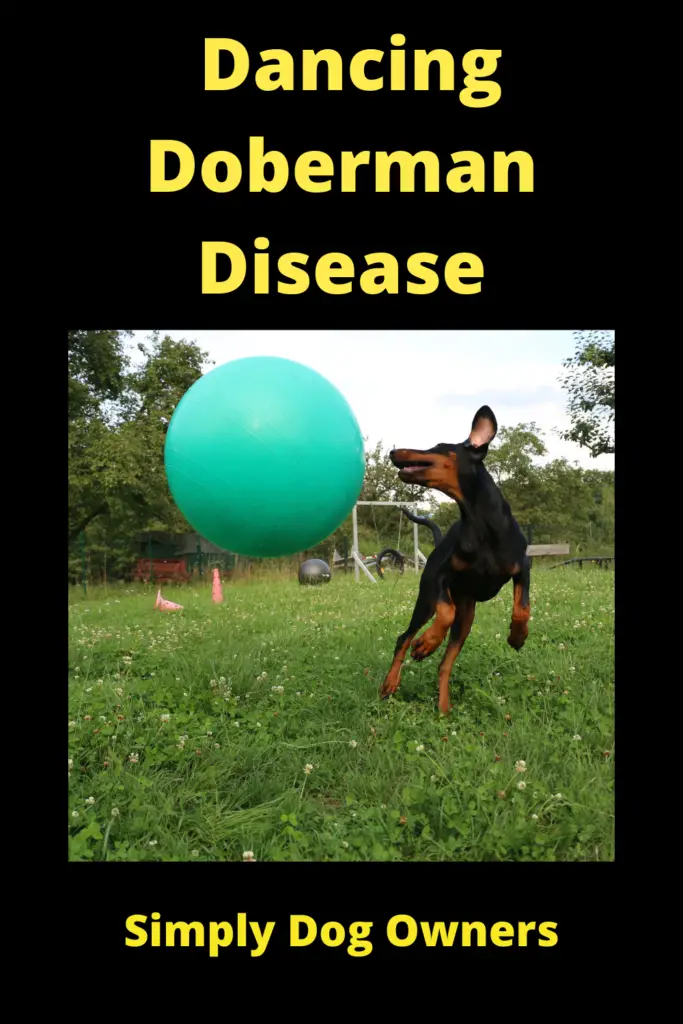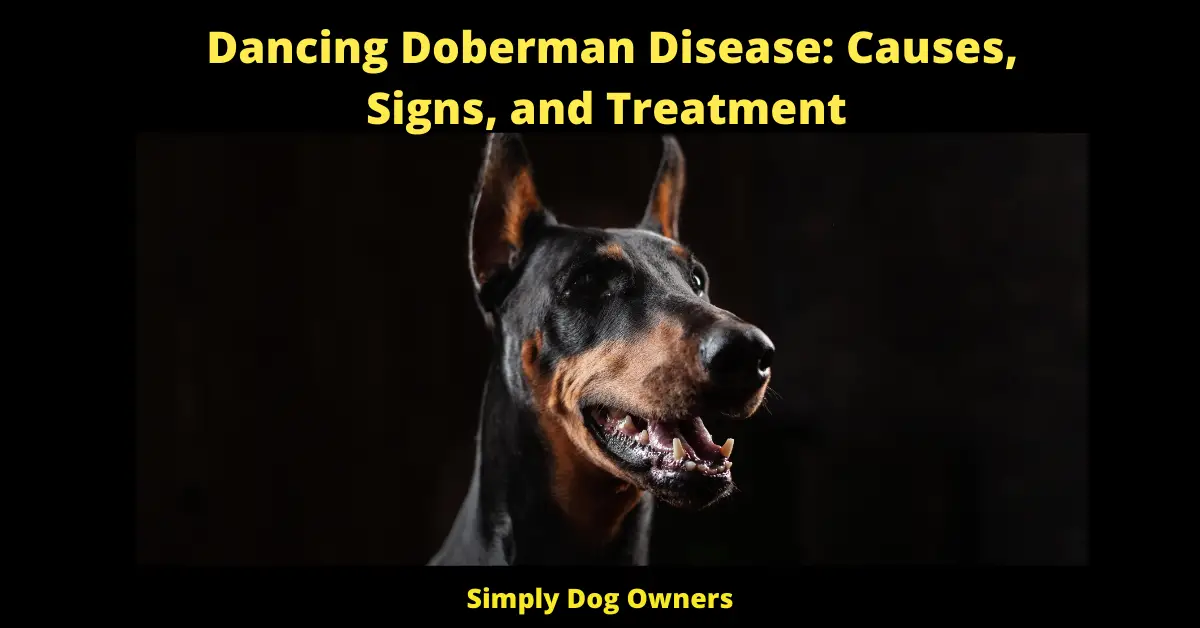Dancing Doberman Disease: Causes, Signs, and Treatment
Dancing Doberman disease is a condition that affects the central nervous system of dogs. It can be treated with medication, but it’s important to catch this disease early on before it worsens and causes permanent damage. Please keep reading for more information about dancing Doberman disease, its symptoms, and treatment options.
What is Dancing Doberman Disease?
Dancing Doberman disease or DD disease is specified only to the Doberman pinscher breed. There are no accounts of this disease in other breeds; that’s why it is named so. It is a genetic neurological disorder of the hind legs that also develops by spinal tumors. Similar signs can be seen in the rear legs of other affected dogs. But according to veterinarian panels and experts, only the Doberman breed is affected by this disease. Miniature Doberman pinscher is no exception here.
Cervical vertebral instability also becomes the root cause of this disease. Physical examination and tests confirm this disease in the dog. Pet insurance will help you improve the quality of life of your dog, but there is no cure for this disease.

Causes of Dancing Doberman Syndrome
Wobbler syndrome affects the necks of giant dogs, and intervertebral disc disease can cause spinal arthritis. You won’t find this dancing phenomenon of rear leg in other breeds. Dancing Doberman disease is associated with muscle atrophy. But the originally bred dogs are not saved from this Doberman disease.
According to vets and scientists, the lumbosacral disc disease and dancing Doberman are because of the dog’s genetic issue. There are no pieces of evidence of this disease in other breeds. Spinal injury and genetic history are the two primary factors still accepted by vets for this ailment. Not every Doberman is exposed to this ailment. That’s why you shouldn’t give off the idea of having a Doberman for you.
Signs of Dancing Doberman Disease
Dancing Doberman disease starts from 6 to 7 months, or you will see its signs in 7 to 9 years. It starts from one rear leg. According to veterinarian panels, Cauda Equina syndrome is a surgical emergency that can be cured, but there is no cure when you talk about this specific Doberman disease. Dancing Doberman signs involve the spasm and jumping muscles in the rear limbs.
Dogs become unable to stand on their rear paws. It will start from a single hind leg and will affect the other hind leg as well. Other tests will reveal the same thing, and you will know that your dog is suffering from an incurable disease. The use of medicine will do no good n this situation.
Why do Dobermans hop?
When veterinary neurologists discuss distal polyneuropathy or dilated cardiomyopathy, they refer to all other breeds, including Dobermans. But the dancing Doberman disease is only specific to this breed. The dog with Doberman disease shows you the symptoms at seven months or seven years of age. The health problems associated with dancing Doberman are towards the lower spine.
Many dogs require accurate diagnosis and tests on blood work. A perfectly capable Doberman can start showing you the hopping signs because of the initiation of this disorder. Their legs become unable to keep them in a standing position. They would walk and run like normal animals, but standing will be impossible for them. The hoping is because of losing the muscle strength that can be seen after six months or six years.
Treatment for Dancing Doberman Disease
Dancing Doberman disease can be easily confused with other diseases like dysplasia or other conditions. Dancing Doberman allows the dogs to walk and run normally. But standing will be an impossible feat here. The veterinarian’s help will let you diagnose it, but there is no cure for this Doberman disease. All the breeds except Dobermans are safe from this issue.
Scientists and vets cannot treat it, but still, you can enhance the quality of life of your pet. Vets claim that there is no pain in this ailment. That’s why you don’t need to worry about your dog much. But with the help of love and care, you can make your dog live life to the fullest. A little help from owners will change things much.

Prevention and Care for Dogs with DD
Dancing Doberman disease is only present in Doberman pinscher dogs. Most dogs don’t feel any pain or issue in their spinal cord. But still, you need the treatment for the affected area. Veterinarians claim that dogs with this Doberman disease tend to have a higher age with a healthy life. The dancing Doberman dog will not show any weakness signs or reduction in immunity if you play your part well.
For prevention, you can do nothing at all because it is a genetic disease. But for the care of the dog, there are many things you can do to increase the quality of life of your pet. You can spend more time and take your dog on regular exercise and park visits. With regular vet visits, you can enhance life expectancy and happiness for your dog to a greater extent.
What is Doberman Hind Leg Problems?
According to veterinarians dancing Doberman disease affects the spinal cord and hind legs of Doberman pinscher. When the legs are affected with this Doberman disease, there is no pain and no treatment. Most dogs suffer from this disease in early childhood or middle age. A dog suffering from this disease tends to hop and keep shifting the body weight from one leg to another. That’s why the dog is called dancing Doberman.
The hind legs gradually lose muscle strength, and the poor soul cannot stand on the legs. There will be no difficulty though in running or walking, but still, the dog will suffer a lot. This leg problem cannot be treated to date. With the help of love and affection, you can help your dog towards a better life.
What causes Weakness in a Dog’s Hind Legs?
Doberman pinschers are the only breed that suffers from dancing Doberman disease. The symptoms might be confusing for some people. But the vet visit with the help of tests will help you come up with an accurate diagnosis of dancing Doberman dogs. The Doberman disease firstly affects the muscles in the single hind leg of the dog, and standing becomes impossible.
The muscle strength starts fading off in the hind legs, and the animal finds it impossible to stand up and keep in that position. The reason for this weakness is a genetic anomaly that is purely history-based, and you cannot do anything to cure it if your dog is affected by this disease. The brain and spinal cord play games on the body, and your dog suffers the most.
Why is my Dog having Trouble walking with his Back Legs?
It is not implied that every Doberman pinscher withstanding issues are suffering from dancing Doberman disease. Only a vet can understand the symptoms, and diagnosis will be purely based on tests. The Doberman disease is quite confusing, and this breed is also prone to other legs related diseases. Losing muscles strength of your dog’s hind leg might signify hip dysplasia or some other disease.
Dancing Doberman dogs will not have a walking or running issue. They will only face difficulty in standing up and keep standing in the same position. There are high chances that your dog is suffering from ADHD, and you confuse this ailment with the DD disease. A vet visit is recommended in such a scenario. Only then can you understand the situation of your dog.
Do Dobermans suffer from Hip Dysplasia?
Doberman pinschers and other big dogs can suffer from hip dysplasia. The dog suffering from this disease will show the symptoms like difficulty getting up, bunny hopping, and reduced mobility. A vet waist will let you understand the issue in standing and using a single hind leg or both to their maximum capacity.
A veterinarian prefers diagnosis based on tests on every breed to identify the reasons and causes of weakening muscles. Hip dysplasia can affect dogs at any age, but the higher chances are older. Injury, malnutrition, or other diseases are the reasons behind this condition. You can help your dog with medication and therapies to bear the pain and live a happy life.

How Common is von Willebrand disease in Dobermans?
Von Willebrand disease is more common in this breed than the dancing Doberman disease. It is a fatal hereditary disease that can claim the life of your pet if things are not taken care of properly. The symptoms of excessive bleeding reveal that blood clotting is not at peaks in their body. A vet can help dogs with veterinarian medications to save their lives.
When you get this disease diagnosed, you need to take care of the food and medication for your puppy. Vets and experts have found that Dobermans are the most affected and frequent carriers of this disease. You need to provide them with care to make their lives safe and meaningful. There is no cure for this disease, and you cannot identify the pet by looking at it. The best approach is to get your dog tested for this disease at the earliest and start the medication to prevent them from any serious medical condition.
Final Thoughts
This information should help you understand what Dancing Doberman Disease is, the causes of it, how to recognize its symptoms, and what treatments are available. You can also contact your veterinarian for more assistance or if you have any questions about this condition. If you think that someone has shown signs of Dancing Doberman Disease please consult a medical professional as soon as possible!
